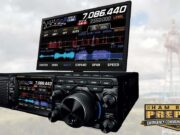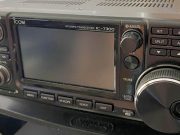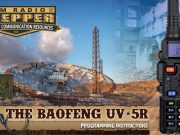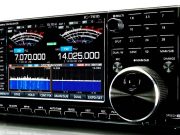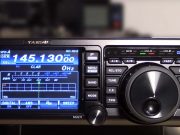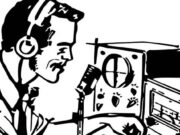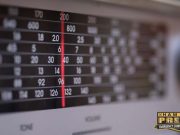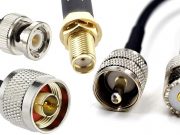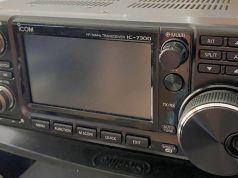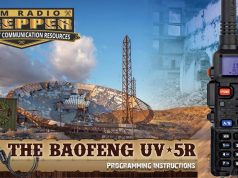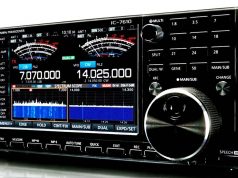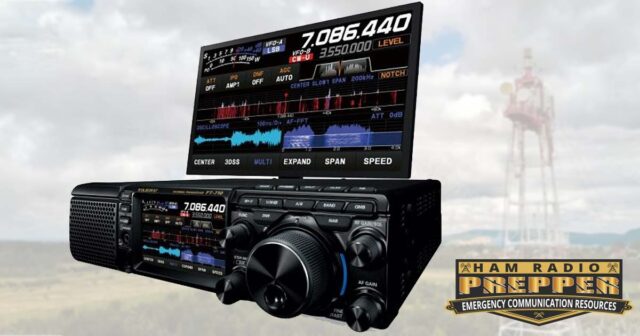
The Yaesu FT-710 AESS is a high-frequency transceiver built specifically for amateur bands, and it’s making a lot of noise in the ham radio world—and for good reason. It’s a feature-rich rig that slots right into the sweet spot between budget and high-performance, appealing to both seasoned operators and newer hams looking to get serious about HF. What you’re getting here is a compact desktop unit with big-league receiver performance, strong transmit audio, and a ton of customization. Let’s break it down and talk about what makes this rig tick—and whether it earns a permanent place in the ham shack.
FT-710 Technical Features:
At its core, the FT-710 is a fully software-defined radio (SDR) with direct sampling on HF and 6 meters. It transmits across the amateur bands from 1.8 MHz to 50 MHz, and receives from 30 kHz all the way up to 75 MHz. Mode coverage includes CW (A1A), AM (A3E), LSB/USB (J3E), and FM (F3E), so you’re covered whether you’re chasing DX on 20 meters or ragchewing on a local 10-meter net.
Receiver performance is where this radio starts to separate itself. With a Blocking Dynamic Range (BDR) of around 128 dB and third-order IMD numbers that are better than many radios in this class, the FT-710 handles crowded band conditions with grace. It doesn’t fold under pressure during contest weekends or pileups. Yaesu’s implementation of the DSP is dual-core and 32-bit, and it works well—providing tools like NOTCH, CONTOUR, SHIFT/WIDTH filtering, and a surprisingly usable DNR (digital noise reduction) system.
The display is a 4.3-inch high-resolution color TFT touchscreen with a clean, easy-to-read spectrum and waterfall. It lacks some customization features like color palette tweaking or averaging on the scope, but it’s snappy and responsive. And for folks running larger shack setups, the FT-710 includes a DVI-D port for connecting an external display.
Performance In the Field:
In real-world use, the FT-710’s receiver is as good as anything in this price range and frankly outperforms some radios that cost more. It’s a quiet receiver. That doesn’t just mean low noise—it means it’s less fatiguing over long operating sessions. You can sit with this radio for hours without getting tired of listening, and that’s something you start to really appreciate after years behind the mic.
The AESS (Acoustic Enhanced Speaker System) is more than just a marketing gimmick. Combining the internal speaker with the included SP-40 external speaker results in clear, full-sounding receive audio. You’ll hear subtle details in weak signals that would get masked or buried on other rigs. If you’re a CW op or into weak-signal work, this makes a difference.
TX Audio and Power Output:
Out of the box, transmit audio is strong—full-bodied without sounding processed. With the included SSM-75E mic, you’re getting good reports on the air with zero tweaks. But if you want to dive in, the three-band parametric EQ gives you fine control over the tonal curve of your voice. It’s easy to dial in a presence boost or clean up the lows depending on your voice characteristics.
The radio runs a solid 100 watts on SSB/CW/FM and 25 watts on AM. Power output is consistent and stable even during longer transmissions, and it doesn’t need a speech processor to sound good. The fan runs often, but it’s quiet enough not to be distracting unless you’re in a completely silent room.
Comparisons to Yaesu FTDX-10 and Icom IC-7300:
The FT-710 shares a lot of DNA with Yaesu’s FTDX-10. If you’ve used the -10 before, you’ll feel right at home here. The receiver specs are similar, though the FTDX-10 still edges it out in some advanced features and slightly more polished filtering options. However, the FT-710 is smaller, quieter, and arguably more user-friendly in daily operation.
Where things get interesting is when you compare it to the Icom IC-7300, the longtime king of this category. The 7300 has a more intuitive UI and arguably a cleaner, more elegant workflow. But the FT-710 counters with better raw receiver performance and audio that’s more pleasing over long periods. The spectrum scope on the 7300 is more refined and has averaging, which some will miss on the Yaesu.
Still, I’ll say this as someone who’s spent years operating with the IC-7300: the FT-710 has a more capable receiver. If you’re digging signals out of noise, you’ll notice it. It’s not a massive difference, but it’s there—and over time, that makes the FT-710 the rig I prefer to sit in front of.
However, the FT-710’s fundamentals as a receiver are outstanding, which makes it a compelling choice – and this is coming from someone who loves the IC-7300.
Pros and Cons
PROS:
- Quiet, high-performance receiver with great dynamic range
- AESS delivers excellent audio fidelity
- Solid DNR and other DSP tools
- TX audio is flexible and adjustable with built-in EQ
- Dual USB ports and external monitor output
- Compact footprint and modern design
CONS:
- DNR still isn’t perfect—can sound artificial at higher settings
- Waterfall and scope display could use averaging and better customization
- AM mode is a bit of an afterthought—performance is serviceable, but not stellar
- Continuous fan operation might be noticeable in a quiet room
- UI is solid, but not as streamlined as the IC-7300’s
Ham Radio Prepper’s Final Verdict:
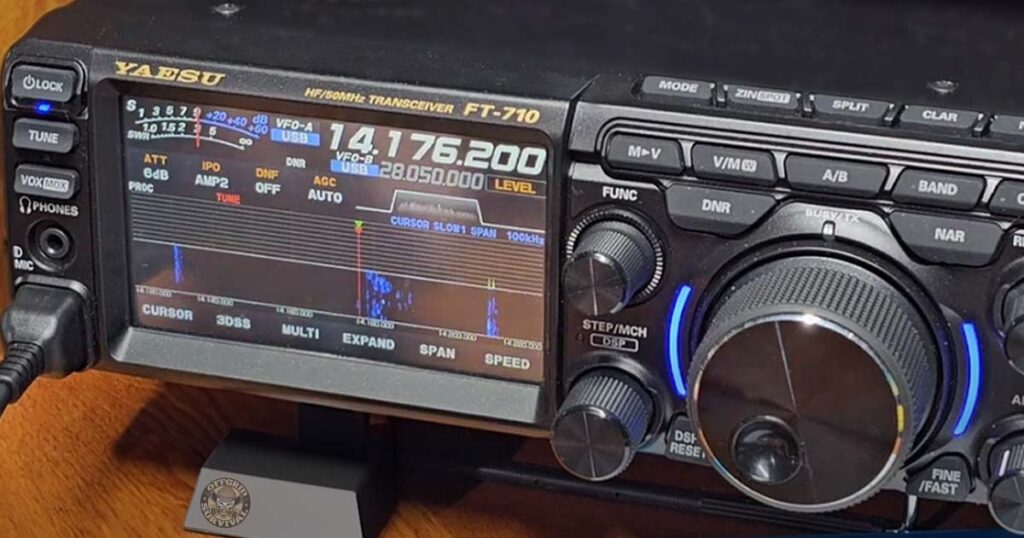
The Yaesu FT-710 AESS is one of the strongest contenders in the mid-tier SDR class. It checks nearly every box: high-performance receiver, clean and customizable transmit audio, smart feature set, and a price point that makes it accessible to a wide range of hams. Whether you’re a serious DXer, a casual ragchewer, or just looking to upgrade your base station, the FT-710 is going to give you more radio than you paid for.
Antennas:
We tested this rig on a couple different wire setups, but the one we keep coming back to as a solid all-around match is the MFJ-1778 G5RV Wire Antenna. It covers multiple bands well and pairs nicely with the FT-710’s internal tuner.
Power Supply:
Our primary base station power supply for all our radios we’re running an Astron RS-35M-AP. Clean, stable, and reliable—exactly what you want feeding a high-performance rig like this.

 <
<
